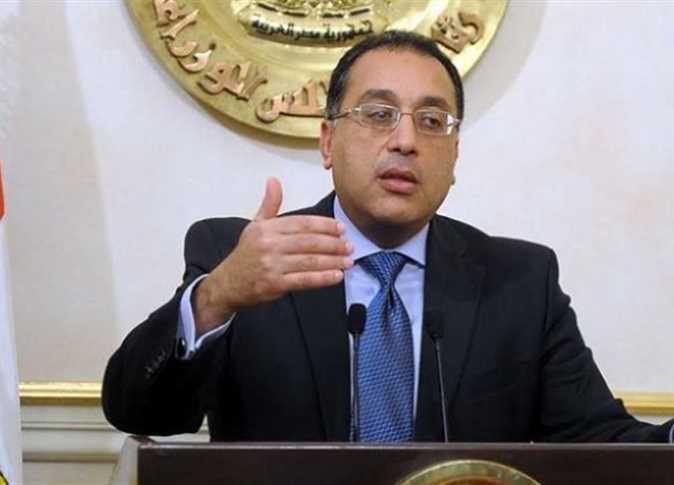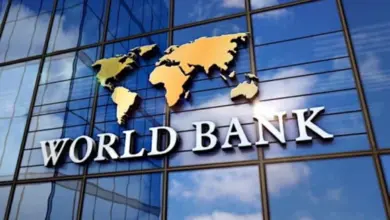Egypt’s increased reliance on local lenders to finance its budget shortfall may stifle any economic recovery by reducing the incentive of banks to lend to companies.
The Arab country’s local-currency borrowing costs have surged to the highest levels in almost three years as foreign investors dumped the debt following the uprising that ousted President Hosni Mubarak in February. The country’s interim government rejected international loans to fund this year’s budget deficit, leaving local banks to shoulder the burden.
The government’s domestic borrowing is coming at “a very high cost and it chokes off resources that could be made available to the private sector,” said Magda Kandil, executive director and director of research at the Egyptian Centre for Economic Studies. Banks can “easily refrain from lending to the private sector and capitalize” on “attractive and less risky” government securities, she said.
The yield on one-year treasury bills has soared 263 basis points, or 2.63 percentage points, since the last pre-revolt sale to 13.07 percent as Egypt redirected its bond sales to bills with maturities of one year or less to avoid paying higher interest in the long term. Loans were the equivalent of 50 percent of deposits at the commercial banks in June, down from 52 percent a year ago, according to central bank data. That compares with 93 percent in the United Arab Emirates as of May.
Egypt’s economy contracted 4.2 percent in the quarter that ended in March amid the worst political crisis to hit the country in three decades. The budget deficit is expected to widen to 9.9 percent of gross domestic product this fiscal year from 9.5 percent a year ago, according to EFG-Hermes Holding SAE, the biggest publicly traded Arab investment Bank. The government said in June it’s targeting 8.6 percent.
Higher borrowing costs may curtail lending to companies, potentially slowing economic growth by up to 1 percentage point in the next one to two years if they don’t retreat, said Jaap Meijer, the Dubai-based head of the bank team at AlembicHC.
“Private-sector demand was actually growing at a healthy pace last year, but that’s no longer the case because of the uprising and possibly because of the increase in interest rates,” Meijer said. “Public banks appear to be more keen to lend to the government because these investments carry high yields and attract zero risk-weighting.”
Foreign investors reduced their holdings of Egyptian T- bills by 34.9 billion pounds (US$5.9 billion) in the first six- months of the year to 24.5 billion pounds, according to central bank data. The country’s 39 private and public banks stepped in, increasing their investments by 46 percent and 56 percent, respectively. Bank of Alexandria, the Cairo-based unit of Italy’s Intesa Sanpaolo SpA (ISP), increased its holdings by 70 percent to 8.16 billion pounds.
Egypt turned down a US$3 billion International Monetary Fund loan in June. Samir Radwan, the then minister of finance, said the government would rely on sales of local-currency debt to finance 90 percent of its budget deficit, expected to reach 134 billion pounds this fiscal year. Radwan has since been replaced by Hazem El Beblawi, who confirmed the government’s strategy in an e-mailed statement 4 September.
The government plans to sell securities this quarter ranging in maturity from three months to three years valued at 151.5 billion pounds, the highest amount on record and a 12 percent increase from the same period last year.
Reliance on local lenders “that’s taking place now will for sure put pressure on the liquidity of the banks and will affect the capability of the private sector to borrow,” said Hani Serie El-Din, former chairman of Egypt’s financial markets regulator, the Capital Markets Authority. “It’s quite a challenge. It will impact growth.”
Egypt’s economy will grow by 1 percent this year, according to IMF projections. That compares with a contraction of 3.3 percent estimated by EFG-Hermes.
Still, some non-government banks didn’t increase their holdings of government debt in the aftermath of the revolution such as Commercial International Bank Egypt SAE (COMI), the country’s biggest publicly traded lender. The bank, also known as CIB, cut its investments in T-bills by 24 percent to 7 billion pounds.
The potential effects of high Egyptian-pound borrowing costs on economic growth may also be mitigated by the ability of large corporations to borrow in dollars and their strong cash positions, said Meijer.
“The commercial banks we cover have actually reduced their treasury-bill holdings, so we expect them to continue to lend to private businesses when demand returns,” he said.
Egypt’s local borrowing expenses rose as its credit rating was cut amid the unrest. Fitch Ratings cut Egypt’s credit worthiness one level, to BB, on 3 February, leaving it two levels below investment grade. Moody’s said in June the “political environment was the main source of uncertainty. It lowered its rating of Egypt twice this year to Ba3, three levels below investment grade.
The yield on country’s 5.75 percent 10-year dollar bond due April 2020 fell to 5.54 percent from the Jan. 31 peak of 7.07 percent. The cost of protecting government debt against default for five years was at 406 basis points on 5 September, according to data provider CMA, which is owned by CME Group Inc. and compiles prices quoted by dealers in the privately negotiated market. That compares with 212 basis points on 2 September to protect Tunisian government debt.
Egypt will need to reduce its budget deficit, achieve political stability and ease restrictions on lending to small and medium businesses to boost economic growth, said the Egyptian Centre for Economic Studies’ Kandil.
“There’s no question we’re going through a shaky environment for financing demand from the private sector,” she said. “But we have to recognize that this demand can return if we can apply fiscal consolidation, level the playing field for small borrowers and well-connected businessmen. With more political stability, that will create jobs and boost growth.”



